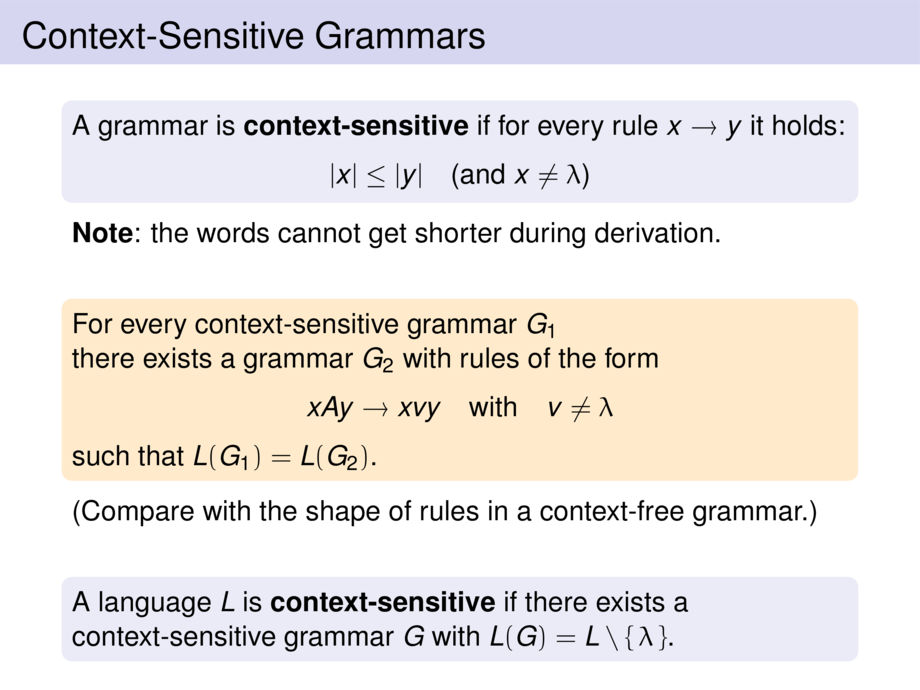



































































































4/43
\begin{frame}{Context-Sensitive Grammars}
\begin{block}{}
A grammar is \emph{context-sensitive} if for every rule $x \to y$ it holds:
\begin{talign}
|x|\leq|y| \quad \text{(and $x \neq \lambda$)}
\end{talign}
\end{block}
\emph{Note}: the words cannot get shorter during derivation.
\pause\bigskip
\begin{goal}{}
For every context-sensitive grammar $G_1$\\
there exists a grammar~$G_2$ with rules of the form
\begin{talign}
xAy \to xvy \quad \text{with} \quad v \neq \lambda
\end{talign}
such that $L(G_1) = L(G_2)$.
\end{goal}
(Compare with the shape of rules in a context-free grammar.)
\pause\bigskip
\begin{block}{}
A language $L$ is \emph{context-sensitive}
if there exists a context-sensitive grammar $G$
with $L(G) = L \setminus \{\, \lambda \,\}$.
\end{block}
\end{frame}

